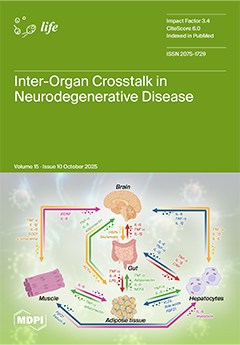Introduction/Background: Most adrenal incidentalomas (AIs) are non-functioning adrenal tumors (NFATs) without clinically overt hormonal hypersecretion; one-third show subtle endocrine over-activity and mild autonomous cortisol secretion (MACS). One out of ten NFATs involves not a unilateral (UTs), but bilateral tumors (BTs). Bone health, as opposed to cardio-metabolic complications, is less studied in NFAs/MACS, particularly in BTs. Hence, we aimed to analyze (blood) mineral metabolism assays (MMAs), including bone turnover markers (BTMs), central Dual-Energy X-ray Absorptiometry (DXA), and 10-year fracture risk estimation (FRAX/FRAXplus) in menopausal patients with UTs vs. BTs. Methods: This was a retrospective, single-center study. The inclusion criteria were women aged ≥50 y and CT-based AI detection. The exclusion criteria were medication against osteoporosis, malignancies, bone metabolic disorders, and cs-1mg-DST >5 µg/dL. Results: The cohort [N = 129; mean age: 62.39 ± 7.9 y; and y since menopause (YSM): 13.7 ± 8] included UT (62.22%) and BT (31.78%) groups with a similar age, YSM, type 2 diabetes rate (35.23% vs. 36.59%), arterial hypertension (73.6% vs. 75.5%), BMI, fasting glycemia, and glycated hemoglobin A1c (
p > 0.5 for each). The borderline significance for morning cortisol was higher in UTs vs. BTs [median (interquartile interval): 13.9 (11.16, 15.00) vs. 10.10 (8.88, 12.95) µg/dL;
p = 0.05] and the MACS-positive rate (24.45% vs. 36.59%;
p = 0.051). The largest tumor diameter was similar (2.26 ± 0.97 vs. 2.51 ± 0.87 cm;
p = 0.175), as was cs-1mg-DST [1.27 (1.01, 1.95) vs. 1.52 (0.92, 2.78) µg/dL;
p = 0.357]. MMAs, BTMs, and DXA-BMD/T scores were similar in the UT vs. BT groups. The most prevalent DXA categories were osteopenia (50.82%) and normal (41.38%). The rate of DXA bone impairment (osteoporosis + osteopenia) was 72.13% vs. 58.62%. A generally low prevalence of fragility fractures was found (3.88%; N = 5, 3/2 between the groups). Out of the 25.58% (N = 33) females who were found to be MACS-positive, 54.55% were in the UT group and 45.45% were in the BT group. Age, YSM, the rate of analyzed comorbidities, BMI, biochemical parameters, DXA/BMDs, and FRAX/FRAXplus (lumbar BMD adjustment)-based probabilities were similar between the UT and BT groups, regarding MACS-positive vs. MACS-negative groups. Diabetic patients were all MACS-positive. A higher PTH level in the MACS-positive UT vs. MACS-positive BT groups (36.32 ± 9.21 vs. 51.65 ± 9.58 pg/mL;
p = 0.01) was found, with the mean 25-hydroxyvitamin D showing mild deficiency (24.21 ± 12.73 vs. 26.16 ± 9.89 ng/mL;
p = 0.694). In UTs, the largest tumor diameter statistically significantly correlated with baseline ACTH (r = −0.391;
p < 0.001) and cs-1mg-DST (r = 0.306;
p < 0.001), while in BTs, the largest diameter of the two tumors showed a positive correlation with cs-1mg-DST (r = 0.309;
p = 0.012). Conclusions: The findings from this real-life setting (similar age, YSM, and diabetes and MACS-positive rates) could help us to better understand the bone features in UTs vs. BTs, noting that ACTH/cs-1mg-DST measurements showed no difference. The study population was associated with a generally low fracture prevalence and 10-year fracture risk probabilities, which might act as a bias in this distinct clinical exploration. Whether a multifactorial algorithm is needed to provide a 360-degree perspective of the bone health assessment in these patients remains an open matter. So far, starting from the current guidelines, a patient-centered approach is mandatory. To our best knowledge, this study adds to the limited number of prior studies regarding bone impairment in bilateral tumors.
Full article






